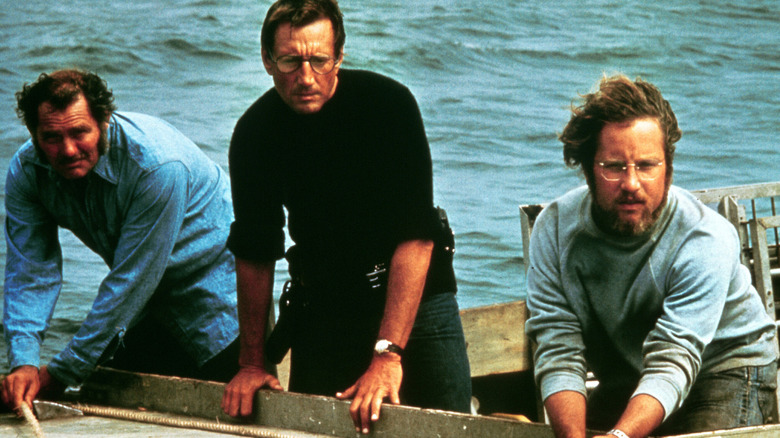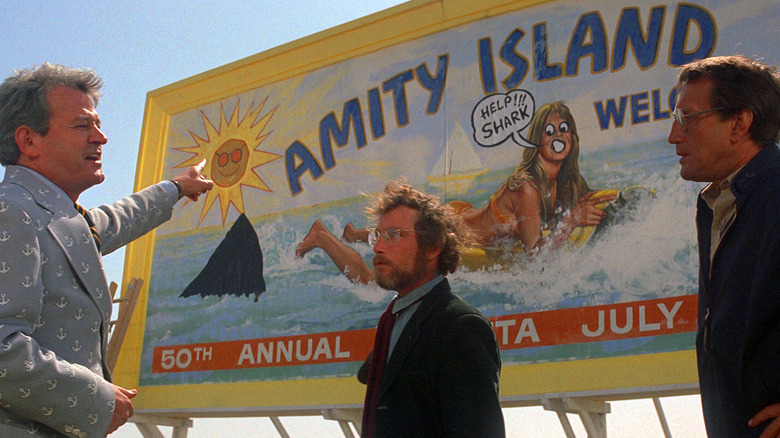Steven Spielberg Saved Jaws With Some Help From Alfred Hitchcock
"Jaws" features one of the most terrifying movie monsters of all time. But what makes this monster so terrifying is it's barely featured at all. Steven Spielberg's 1975 thriller obfuscates its villain, allowing the mysterious depth and vastness of the ocean to fill the viewer's imagination. The most terrifying part of "Jaws" is not the shark itself, but that we cannot see it coming.
The horror classic kicks off when a young woman staying in a coastal New England tourist town is killed by a shark. The police chief (Roy Scheider) runs into trouble in his investigation when the mayor (Murray Hamilton) refuses to shut down the beaches for fear of losing tourist revenue. As a compromise, the police chief embarks on a quest with a scientist (Richard Dreyfuss) and a hard-boiled seaman (Robert Shaw) to find and capture the murderous creature.
The monster terrorized the fictional town of Amity Island, as well as audiences around the world. My mom, who was 7 years old when "Jaws" was released, swears that she is still afraid of the ocean. For a monster that had such a palpable impact on its audiences, it gets a shockingly small amount of screen time. The mechanical shark itself wasn't all that terrifying, but a bone-chilling suspense surrounded the creature. For this, Spielberg took a note from one of his heroes: the master of suspense, Alfred Hitchcock.
The less you see, the more you get
The director of "Jaws" faced a lot of challenges when shooting the mechanical shark. Electrical problems and design flaws wasted huge chunks of money on unusable models (via Robson Green's 2013 book "Extreme Fishing"). With the technical difficulties, Spielberg was forced to cut out many shots he had planned to feature the shark in. "I had no choice but to figure out how to tell the story without the shark," the filmmaker was quoted as saying in the book. For reference, he looked to Alfred Hitchcock and considered what the legendary suspense director would do in a similar situation. This led him to a realization: "It's what we don't see that is truly frightening."
This technique calls back to the earliest horror films, like the 1931 German expressionist film "M," which hides its antagonist in the shadows. The method was famously employed again in Hitchcock's groundbreaking 1960 classic, "Psycho." In the most iconic scene, the protagonist (Janet Leigh) is murdered in the shower by a knife-wielding killer whose face remains hidden. Concealing the identity of the murderers in both films built suspense and made their deaths all the more terrifying. The threat could come from anywhere, and the audience was totally in the dark. "Jaws" would later use the same tactic by concealing its monster in the ocean.
Without a doubt, the directorial choice elevated the film to an unforgettable blockbuster. Spielberg agrees that the challenges he faced with the mechanical shark ended up being a blessing in disguise. "The film went from a Japanese Saturday matinee horror flick to more of a Hitchcock, the less-you-see-the-more-you-get thriller," the director told The Roanoke Times. The Hitchcockian approach made "Jaws" into a horror staple that would be remembered for decades to come.

